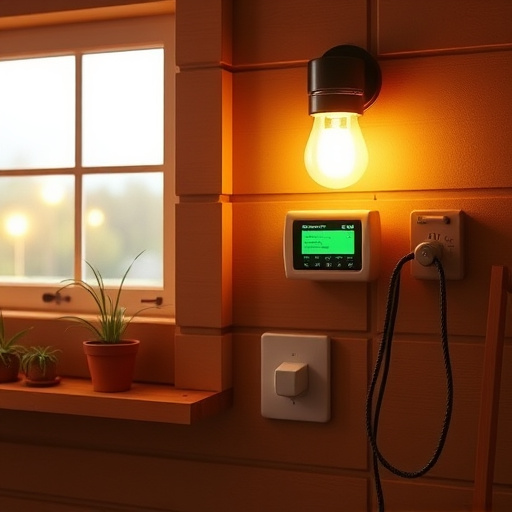DIY outdoor security cameras offer homeowners an affordable, adaptable solution for enhancing property safety. By strategically placing weatherproof cameras with night vision near entry points, you gain peace of mind, remote access via smart devices, and quick emergency response. Regular maintenance and staying current with firmware updates ensure optimal performance of your DIY home alarm system.
Looking to fortify your home’s exterior with a robust security system? DIY home alarm cameras offer an accessible, customizable solution. This guide delves into the world of outdoor security cameras, exploring their benefits and laying out essential basics for successful installation. We’ll help you navigate choosing the right equipment and provide practical tips for setup and maintenance, ensuring optimal protection for your space.
Understanding DIY Home Security Cameras Outdoor: Benefits and Basics
DIY home security cameras outdoor offer a cost-effective and flexible solution for homeowners looking to enhance their property’s safety. By installing these cameras yourself, you gain a deeper understanding of your home’s vulnerabilities and can customize the system to fit your specific needs. One of the primary benefits is the peace of mind they provide; you can monitor your property from anywhere, ensuring quick response times during emergencies. These systems often integrate seamlessly with smart home devices, allowing for remote access through smartphones or tablets.
The basics involve selecting cameras suitable for outdoor conditions, typically weatherproof and equipped with night vision capabilities. Placement is crucial; strategically position them near entry points, such as doors and windows, to act as a deterrent for potential intruders. Many DIY systems utilize wireless technology, making installation simpler and more discreet. Additionally, cloud storage options ensure easy access to footage, while motion detection alerts can notify you of any suspicious activity, empowering you to take prompt action with your DIY home alarms.
Choosing the Right Equipment for Your DIY Security System
When putting together a DIY home security system, selecting the appropriate equipment is paramount. Start by assessing your property’s unique needs—identifying high-risk areas like entrances, exits, and valuable asset locations. This will guide your choice of outdoor security cameras, motion sensors, and alarms, ensuring comprehensive coverage.
Consider factors such as resolution, night vision capabilities, weatherproofing, and battery life for cameras. Motion sensor placement should be strategic to avoid false alerts while still capturing clear footage. Integrating these components seamlessly allows you to create an intelligent DIY home alarm system tailored to your safety requirements.
Installation, Setup, and Maintenance Tips for Optimal Protection
Setting up an outdoor security camera system yourself is a cost-effective way to enhance your home’s protection, offering peace of mind and a DIY satisfaction. Begin by choosing cameras suitable for exterior conditions, with weatherproof housing and night vision capabilities. Position them strategically around your property, ensuring comprehensive coverage of entry points and potential vulnerable areas. Installation involves mounting the cameras on walls, fences, or poles, securing them firmly for stability.
Regular maintenance is key to optimal performance. Keep an eye out for any signs of damage or obstruction, promptly clearing leaves or debris from the camera lenses. Test the system regularly, checking audio and video feeds, and ensuring smooth motion detection functionality. Stay updated with firmware upgrades provided by manufacturers, as these can improve camera performance, enhance privacy features, and integrate better with other smart home devices, forming a robust DIY home alarm network.
